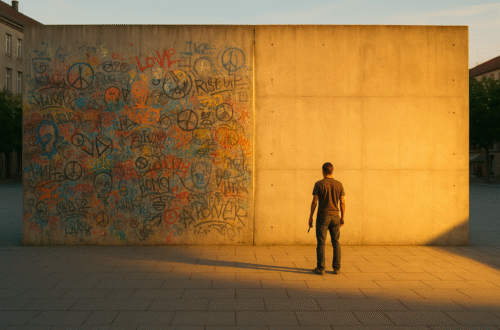And so I have returned. Returned home—but what, or more precisely where, is home?
The past two weeks have been a pilgrimage through wonder: waking up in places so remote, so cloaked in legend and mist, that they previously existed only in the cartography of my imagination. But now they are stitched into the quilt of my experience—warm, worn, and rich with the embroidery of story. So yes, I have returned, but I am not the same person who left.
The Tlingit, the Haida, the Tsimshian nations — names that were once syllables in a textbook are now etched into the chambers of my being. Their stories, songs, and scars have reached across time and placed a hand upon my soul. Much like the barnacled backs of the humpbacks I watched breach in Icy Strait Point, I carry something now: invisible, perhaps, to others, but no less real.
There was a moment—a sacred one—that lingers with particular gravity. I was invited into the creative sanctum of Tlingit elder, and artist, Nate Jackson. The room was simple, his presence anything but. He was a man not of many words, but of deep resonance—like a bass note felt in the sternum. As he showed us his tools, his carvings, his raw cedar, he spoke with reverence not only of his work, but of place. His place. His land, his ancestors—and all the threads binding them together. He was curious about the land of my birth, creating an invitation for dialogue and mutuality of wonder. He didn’t speak of belonging; he embodied it.
And so I find myself wondering, as I unpack more than just my suitcase, where is my place?
It’s a question that doesn’t come with a tidy answer or a GPS pin. The modern mind, after all, likes to deal in certainties, in grids and Google Maps. But perhaps place is less about longitude – latitude, and more about attunement—about the sacred act of showing up. Of inhabiting the now.
In that sense, coming home is less about crossing a threshold and more about returning to presence.
It is the cup of coffee made slowly and with care.
It is the old staircase creaking its familiar complaint beneath my feet.
It is the sun rising—more pedestrian here, perhaps, than over Sitka Sound—but no less holy if I’ve the eyes to see.
It is the quiet companionship of books on my shelf and the stillness between one breath and the next.
Coming home is the sacrament of reacquainting myself with the unremarkable—learning, once again, to find it remarkable.
But it’s not easy, mind you. There’s a certain tug, a gravitational pull toward nostalgia and reverie. I keep drifting toward what was, instead of what is. I keep hearing the ocean in my ears, and half-expecting to see the shadow of a totem pole out of the corner of my suburban eye.
And yet… maybe that’s the point. Maybe the journey wasn’t to a place at all, but to a posture. A way of being. A returning not to a location, but to a presence—a home found not by plane or by cruise ship, but by the anchoring of attention.
So I sit now, in my armchair, with a cup of coffee and a view of the garden. There’s no glacier, no eagle soaring overhead. Just a squirrel of questionable moral fibre and a slightly overgrown hydrangea. And still—I am here. And that is enough.
I have come home. And I am learning, again, to live here.





